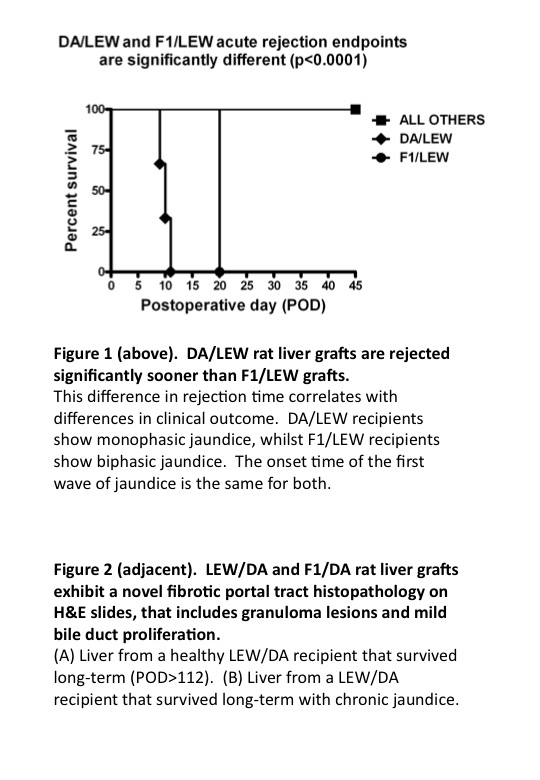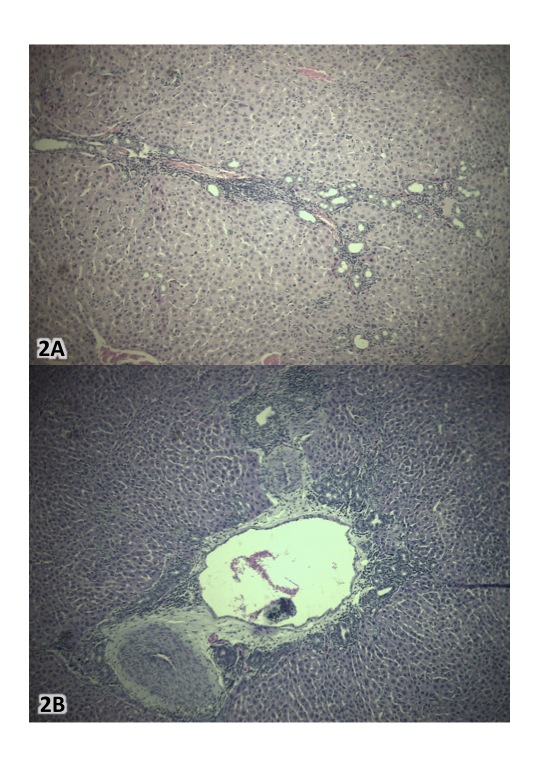2011 - BSS 2011 Symposium
This page contains exclusive content for the member of the following sections: TTS. Log in to view.
Moderated Posters 1
5.35 - Hybrid-resistance test of rat liver transplants reveals that T and NK cells follow the bidirectional rules of bone-marrow transplantation (BMT) for direct versus indirect allospecific recognition and tolerance induction
Presenter: Gerald L., Waneck, Crawley, WA, Australia
Authors: Wen Hua Huang1, Yanwu Tian1, Nigel Swanson1, Luc Delriviere1, Gerald L. Waneck1
Hybrid-resistance test of rat liver transplants reveals that T and NK cells follow the bidirectional rules of bone-marrow transplantation (BMT) for direct versus indirect allospecific recognition and tolerance induction
Wen Hua Huang1, Yanwu Tian1, Nigel Swanson1, Luc Delriviere1, Gerald L. Waneck1
1WA Liver and Kidney Surgical Transplant Service, Sir Charles Gairdner Hospital, Nedlands, WA, Australia
For decades rat liver transplantation has been studied as a model of allograft-induced tolerance. Rats show strain-specific, nonreciprocal liver rejection. Livers are rejected acutely in one donor/recipient direction, but are accepted longterm in the other. Acceptance induces permanent, acquired donor-specific tolerance. Fetal liver is a hematopoietic organ and adult liver is rich in regenerative cells and NK & NKT cells. We therefore hypothesized that liver allografts follow BMT rules for bidirectional T and NK cell alloreactivity. We transplanted livers in all reciprocal combinations between DA and LEW parent rats, and their F1 offspring. DA/LEW grafts are rejected acutely, whilst LEW/DA grafts are accepted long term. We show that F1/LEW grafts are also rejected acutely through a significantly delayed (Fig. 1), distinct biphasic outcome. LEW/DA livers from healthy survivors show a unique, fibrotic portal tract histopathology (Fig. 2). A similar histopathology in human allografts correlates with longterm survival (operational tolerance). This histopathology is seen in healthy F1/DA grafts also, but not other donor/recipient combinations. Thus this pattern follows Mendelian genetics.
Based on the premise that both T and NK cells should be either alloreactive or tolerant, and following BMT hybrid-resistance rules in both GvH and HvG directions, we can explain our results through mathematical binary logic. Logic predicts that the rapid, monophasic HvG rejection of DA grafts by LEW hosts is due to direct recognition by both T and NK cells, with no GvH. Delayed biphasic rejection reflects a T cell-only response, with no GvH. Directly alloreactive T cells without NK 'help' become exhausted after the 1st wave of rejection. The damaged liver begins to heal. Rejection is finally due to a 2nd wave of T cells, primed through the indirect pathway by released alloantigen. The novel histopathology seen in LEW/DA and F1/DA livers correlates with the genetics of tolerance-induction. According to binary logic, these donor/recipient combinations uniquely share a predicted GvH by alloreactive NK cells, with no HvG. Biomarker analysis of fixed & frozen samples taken from rat recipients at necropsy, together with cell purification/depletion strategies and adoptive transfer studies, could elucitate the molecular and cellular mechanisms for rejection versus tolerance-induction.


Important Disclaimer
By viewing the material on this site you understand and accept that:
- The opinions and statements expressed on this site reflect the views of the author or authors and do not necessarily reflect those of The Transplantation Society and/or its Sections.
- The hosting of material on The Transplantation Society site does not signify endorsement of this material by The Transplantation Society and/or its Sections.
- The material is solely for educational purposes for qualified health care professionals.
- The Transplantation Society and/or its Sections are not liable for any decision made or action taken based on the information contained in the material on this site.
- The information cannot be used as a substitute for professional care.
- The information does not represent a standard of care.
- No physician-patient relationship is being established.
Contact
Address
The Transplantation Society
International Headquarters
740 Notre-Dame Ouest
Suite 1245
Montréal, QC, H3C 3X6
Canada
